Collecting Pokémon Cards: A Primer
Understanding what makes Pokémon cards valuable
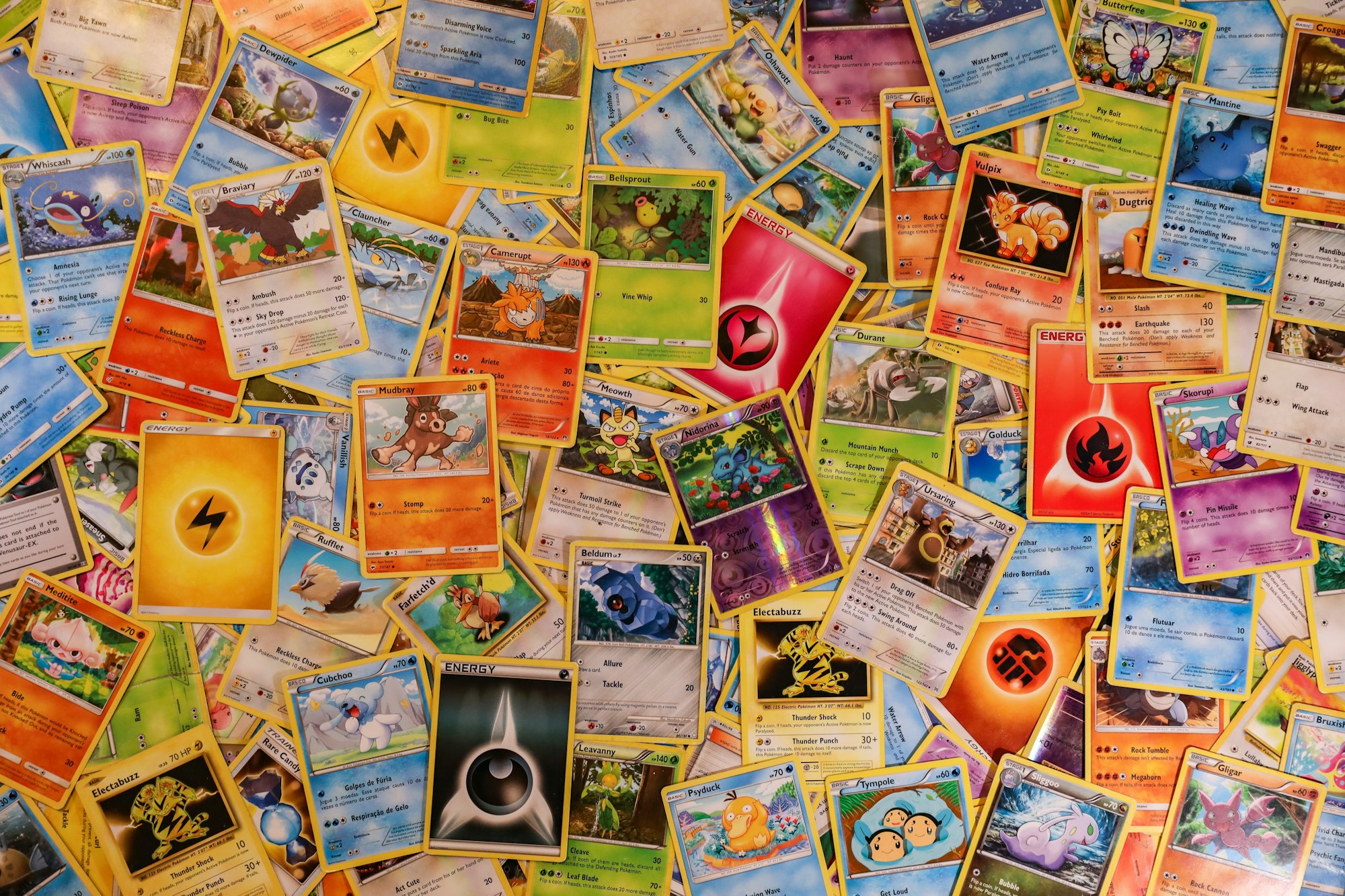
How much would you pay for a piece of cardboard with Pokémon drawings on it? A few cents? Maybe a dollar at best? You will have to do a bit better than that because some folks are willing to pay upwards of $900,000 on a single Pokémon trading card. Why would anyone spend that much money on a small piece of cardboard? How could you get into this potentially lucrative hobby? With the recent surge in popularity, many folks asked these questions. Here’s a quick primer to help you jump in.
Author's note: There are differences between the International and Japanese TCG, and this article will primarily focus on the International cards.
A Brief Background
The Pokémon Trading Card Game (Pokémon TCG) is a collectible card game similar to Magic: The Gathering or Yu-Gi-Oh. It was first published in Japan in October 1996 (8 months after Pokémon Red and Green were released in Japan) and was eventually brought to the US in December 1998. After switching publishers a couple of times, The Pokémon Company was finally created and took control of all publishing duties.
The gameplay of Pokémon TCG is similar to other games, with a lot of elements from the video games that are present. You play the role of a trainer and use your team of Pokémon to attack your opponent’s Pokémon. Each player builds a deck of different types of cards to use in play: Pokémon cards, trainer cards, and energy cards. Keeping it simple, each Pokémon that you play is a specific type, has a set amount of hitpoints, and has different types of moves that it can use. When you knock out your opponent’s Pokémon, you acquire a prize. Once you earn six prizes, you win the match!
New cards are frequently introduced to the card pool for players to keep the gameplay fresh and evolve the meta. These are released in what are called “sets.” They are a collection of new cards (around 200 new cards) that are released as a group roughly four times a year. But not all cards are created equally…
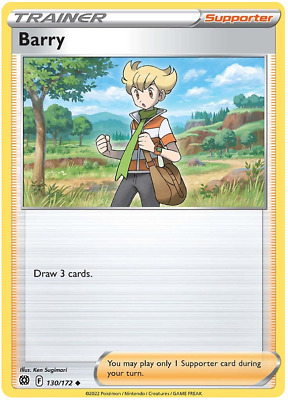
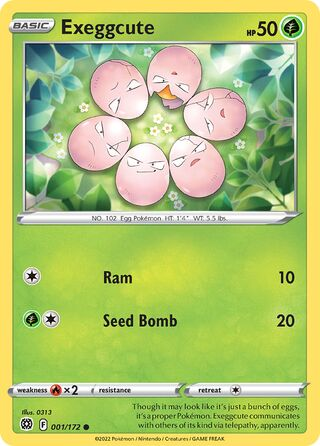
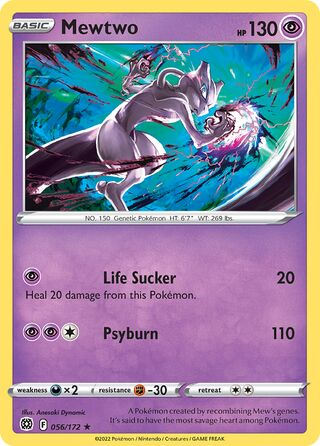
Barry is an Uncommon card, Exeggcute is Common, and Mewtwo is Rare. Source: TCG Collector.
Card Rarities
Let’s take a deeper look at some of these cards. In general, Pokémon cards in a set are broken down into three broad rarity types:
- Common
- Uncommon
- Rare
The rarity of a card is denoted at the bottom of the card, besides the card ID:
You can see on the bottom left that there is a black circle beside “001/172”. This indicates that this is a common card. Uncommon cards are marked with a black diamond, and rare cards have a black star:
Rare cards are a relatively large bucket of cards that have sub-classifications with increasing rarity:
- Regular Rare
- Holofoil Rare
- Ultra Rare
- Secret Rare
Holofoil Rare cards are a rarer version of regular rare cards with a holographic design in the art of the card (shiny).
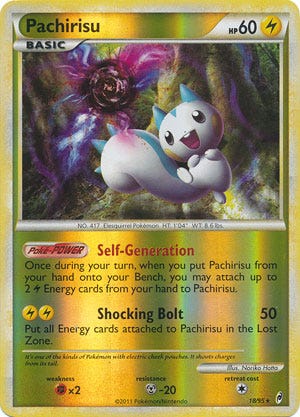
Ultra Rare cards are rarer than holofoil rare cards and usually have holographic, full-art that takes up the entire card. They also are associated with the unique mechanic of the set.

Finally, Secret Rare cards are the rarest in a given set and are cards that are printed with card IDs that are outside the printed size of the set. They are generally reprints of ultra-rare cards with different coloring or alternate art.
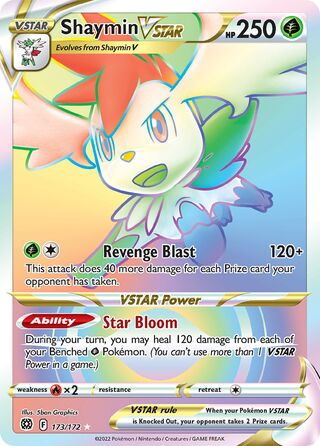
Why are the rarities important? Ultra Rare and Secret Rare cards tend to sell for the most for a given set. Common cards sell for a few cents (at most), while the Ultra and Secret Rare cards fetch around $150-$200 in the first few months of release. Depending on various factors, the price may go up or down. This gives you a target (also called chase cards) for what you want to collect. Then why not just buy the rare cards? For a given set, you cannot purchase most of the cards individually or choose the card you want. So how do you get a hold of all these rare and pretty cards?
Buying the Cards
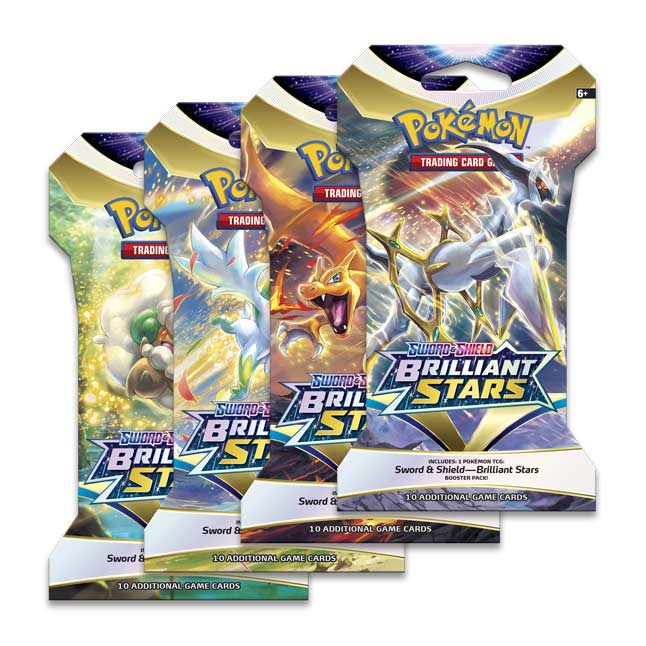
The easiest way to buy cards is through what are called booster packs. Buying one of these ($4 USD) will give you ten random cards from the set, typically with the following distribution:
- 6 Commons
- 3 Uncommons
- 1 Rare
It’s worth noting that the distribution of cards in the Rare group will not be the same; the chase cards will be much rarer to pull than any other Regular Rare card. So what does the distribution look like? It differs from set to set, so let’s use Brilliant Stars as an example. The chase card of this set is considered to be the Ultra Rare, Charizard V card, which goes for around $200 at the time of writing:
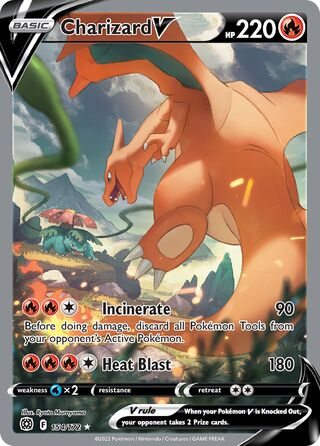
TCGPlayer has calculated the chances (also called pull rate) of getting the above with a sample size of over 10,000 packs:
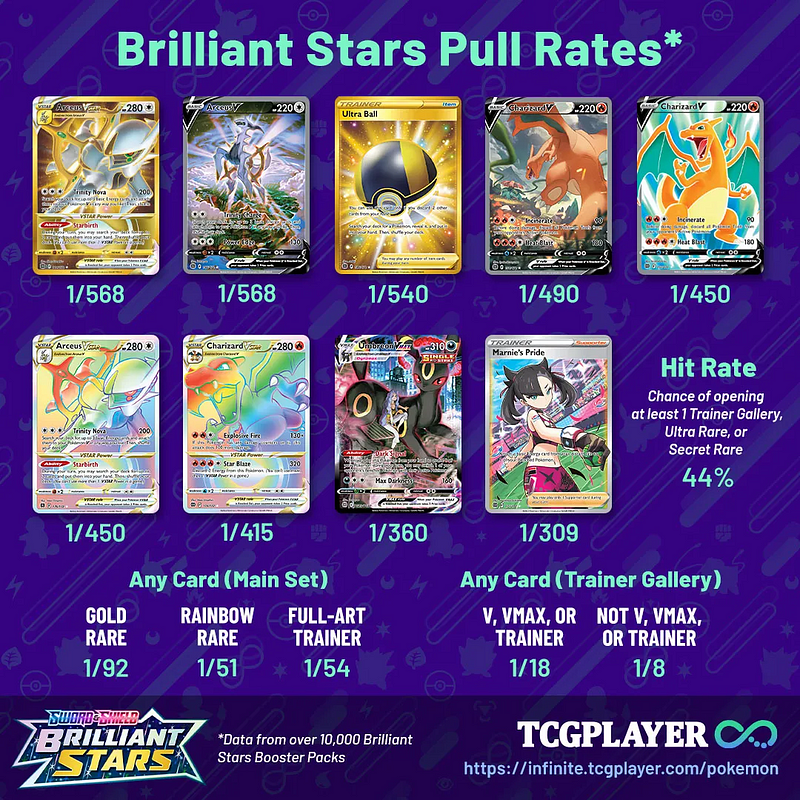
So on average, it will take 490 booster packs to pull the card above, which will cost you $2000. If you sell the card for $200, you are not making a profit; so how do you increase your chances?
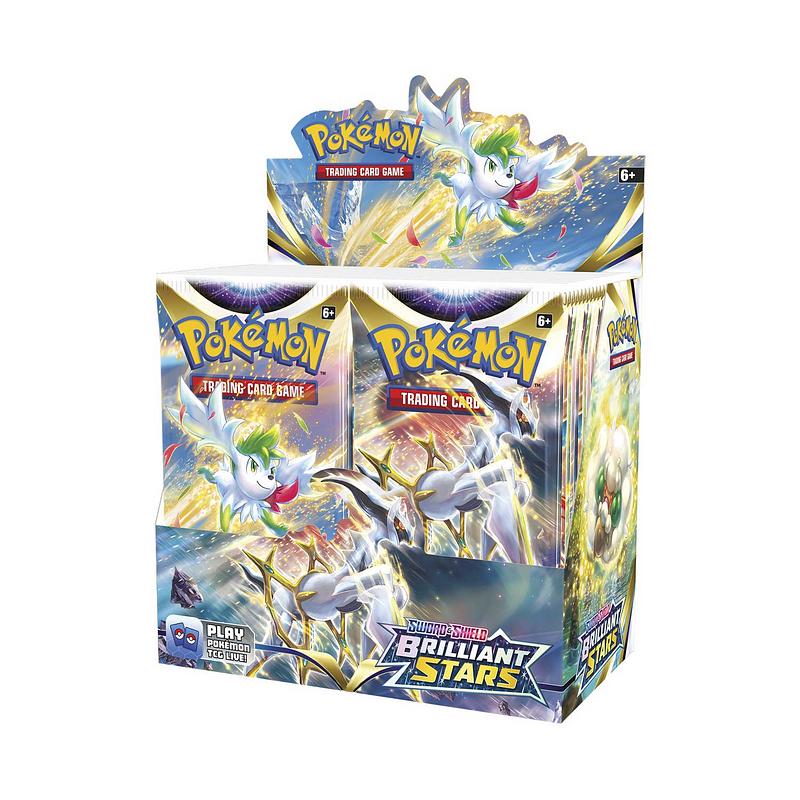
This is a booster box; you typically see these at hobby shops, where you can choose to buy them individually, but you can also purchase them as a set. These contain 36 booster packs with the same distribution as before. Buying booster boxes ($144 USD) will net you 36 rare cards, but on average, will be 20 distinct rare cards, which means fewer chances of running into duplicate cards and increasing your chances of returns.

For the most dedicated, you can also purchase a booster box case containing six booster boxes, assuming that the boxes will have a higher chance of containing distinct cards from each other. These will run you around $900.
There are other packages and bundles: tins, blister packs, trainer boxes, but many of these are more expensive per booster pack than the options above as they include other trinkets and items.
Finally, if you don’t care much about turning a profit through buying packs, the cheapest way to get the cards you want from a current set is to buy them directly from other collectors after a few months. The prices will have stabilized at that point, and you won’t be gambling your money trying to get lucky.


Source: Pokémon Center.
Breaking $200 the Barrier
Let’s assume you got lucky and could pull the chase card. Neat; that’s an easy $200! But how come other cards are selling for much more? What are the different factors pushing these cards above the typical chase card value?
I would recommend reading this Reddit post for the full details, as it has all the gory details. However, if you want a quick overview, I will break it down into four main factors:
- Condition: This is the most important aspect of a card. Between two copies of the card, where one is in pristine mint condition vs. one with wear and tear, the former will always be worth more. Collectors may opt to grade their cards using professional grading companies that will rate them (PSA and Beckett being popular choices) and provide your cards with a permanent rating. Graded cards are usually worth more than an ungraded card.
- Edition: Before the Pokémon Company took over printing the cards, Wizards of the Coast (Publisher of Magic: The Gathering) was responsible for publishing Pokémon sets. They had often done a limited “First Edition” run, with unique stamps on those cards. Cards from these runs fetch much more value. Cards also sometimes have errors corrected in the later prints of the sets, making the “error cards” more valuable as there are fewer in circulation.
- Name Demand: Some Pokémon cards are inherently more expensive than others due to the demand and popularity of that specific Pokémon. A prime example is Charizard, which usually tends to be more valuable than any other Pokémon in the same set.
- Acquisition Method: Although most cards can be acquired through purchasing the sets we explored above, many cards are only available through promotions, winning and participating in competitions, and other teams to which the typical buyer won’t have easy access. These cards are usually much higher in value.
Let’s take a few of the most expensive cards to explain why they are valued so highly.
- Pikachu Illustrator ($900,000 in Feb 2022)
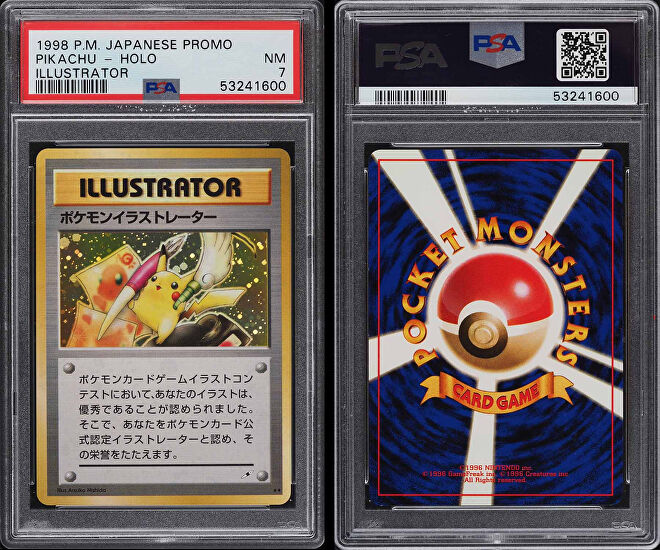
- Condition: PSA 7 (Grade on the top right of the case) — A near-mint card with slight wear on the card. Picture focus may be out of register; centering may not be perfect.
- Edition: A promo card, one-time run.
- Name Demand: Pikachu is usually a pretty popular character 🙂 The card’s artwork was also done by Atsuko Nishida, who is the designer of Pikachu.
- Acquisition Method: This factor is why this card is so expensive: This card was given to the winners of a promo contest run in a Japanese Magazine in 1997 and 1998. There are 41 copies of this card in existence.
2. First Edition Shadowless Holographic Charizard ($369,000 in Dec 2020)

- Condition: PSA 10 — Virtually a perfect card
- Edition: Shadowless first edition is considered an error run of the first edition, which is a smaller subset of the first run. The error is that there is no shadow under the art window of the card, which was fixed in later prints of the first edition.

- Name Demand: As mentioned before, Charizard is the most popular Pokémon when it comes to cards.
- Acquisition Method: Rare card from the first-ever set of Pokémon cards.
The most expensive Pokémon cards list continues to grow and be updated, but you can check out a more extended list with more information here.
There you have it, a quick primer to understanding how cards are distributed, the rarities associated with them, and why some cost more than a house. Just note that Pokémon cards are generally not considered a safe and stable investment, so please don’t make it your primary form of investment. Understand what you want to get out of it, and have fun!
Tristan Jung is an engineering manager during the day and plays too many video games at night. You can follow him on Twitter at https://twitter.com/3_stan
